-
 Bitcoin
Bitcoin $84,038.6422
1.85% -
 Ethereum
Ethereum $1,817.8801
0.92% -
 Tether USDt
Tether USDt $0.9995
0.00% -
 XRP
XRP $2.1351
3.96% -
 BNB
BNB $598.4742
1.52% -
 Solana
Solana $123.1644
5.86% -
 USDC
USDC $1.0000
0.00% -
 Dogecoin
Dogecoin $0.1709
7.15% -
 Cardano
Cardano $0.6626
2.26% -
 TRON
TRON $0.2390
1.01% -
 UNUS SED LEO
UNUS SED LEO $9.5317
1.49% -
 Chainlink
Chainlink $13.0080
1.82% -
 Toncoin
Toncoin $3.3962
-5.04% -
 Stellar
Stellar $0.2604
0.70% -
 Avalanche
Avalanche $18.1814
0.43% -
 Sui
Sui $2.2789
2.22% -
 Shiba Inu
Shiba Inu $0.0...01230
0.88% -
 Hedera
Hedera $0.1653
1.62% -
 Litecoin
Litecoin $84.3499
1.79% -
 Polkadot
Polkadot $4.0537
0.26% -
 MANTRA
MANTRA $6.2954
-1.62% -
 Bitcoin Cash
Bitcoin Cash $301.4205
0.84% -
 Bitget Token
Bitget Token $4.5323
1.18% -
 Dai
Dai $1.0000
0.01% -
 Ethena USDe
Ethena USDe $0.9991
-0.04% -
 Hyperliquid
Hyperliquid $12.3547
4.90% -
 Monero
Monero $215.9297
1.84% -
 Uniswap
Uniswap $5.9374
2.16% -
 Pi
Pi $0.5289
-7.55% -
 Pepe
Pepe $0.0...07202
8.30%
What is a soft fork of blockchain?
Soft forks, backward-compatible updates, enable gradual implementation of blockchain protocol changes without disrupting the network and allowing users to upgrade at their own pace.
Feb 15, 2025 at 02:00 pm
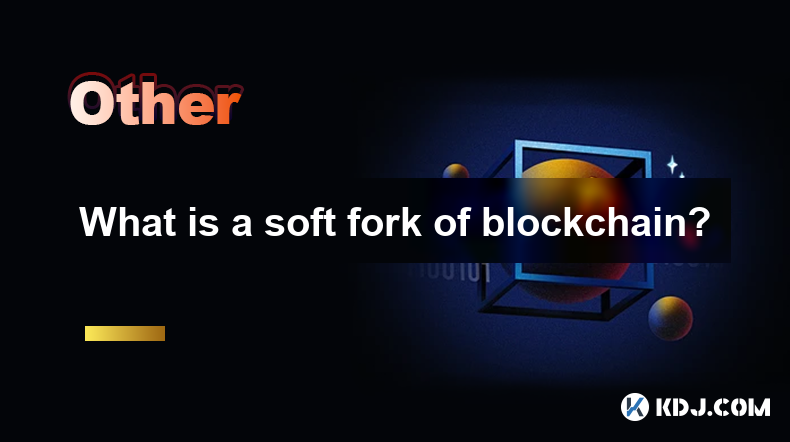
Key Points
- Definition and Characteristics of Soft Forks
- Types of Soft Forks
- Benefits and Drawbacks of Soft Forks
- How to implement a Soft Fork
- Examples of Notable Soft Forks
- Frequently Asked Questions
What is a Soft Fork of Blockchain?
A soft fork, also known as a backward compatible update, is a change to a blockchain protocol that alters its rules in a way that makes previously valid blocks or transactions invalid. However, it maintains compatibility with the old rules, allowing nodes running the old software to continue operating on the new blockchain without any issues. This allows for a seamless upgrade without requiring a hard fork or split in the blockchain.
Characteristics of Soft Forks:
- Backward compatibility: Nodes running the old software can continue to operate on the new blockchain.
- Consensus: Miners and nodes must agree on the new rules for the soft fork to be activated.
- Gradual implementation: Users can upgrade to the new software at their own pace, with both old and new rules being accepted for a transitional period.
Types of Soft Forks:
There are two main types of soft forks:
- User-activated soft forks (UASFs): Triggered by a majority of users adopting the new software and accepting blocks created by the new rules.
- Developer-activated soft forks (DASFs): Activated manually by the developers of the blockchain, typically when a new feature is introduced.
Benefits and Drawbacks of Soft Forks:
Benefits:
- Smooth upgrades: Allows for seamless upgrades without disrupting the network.
- Compatibility: Existing applications and infrastructure can continue to operate without modification.
- Gradual adoption: Users can upgrade at their own pace, minimizing disruption.
Drawbacks:
- Complexity: Implementing soft forks can be technically challenging and may require coordination among developers.
- Potential for bugs: Introducing new rules can introduce potential security or operational vulnerabilities.
- Enforced upgrades: In some cases, users may eventually be forced to upgrade to the new software to fully participate in the network.
How to Implement a Soft Fork:
Implementing a soft fork involves the following steps:
- Community approval: Gather support from the community and major stakeholders for the proposed changes.
- Software update: Developers release updated software that includes the new rules.
- Consensus building: Miners and nodes must agree on the activation threshold for the new rules (e.g., 95% acceptance).
- Transition period: Both old and new rules are accepted during a transition period to allow for gradual adoption.
- Activation: Once the activation threshold is reached, the new rules become active and the transition period ends.
Examples of Notable Soft Forks:
- Bitcoin SegWit: Introduced a new transaction format that improved scalability and reduced transaction fees.
- Ethereum Constantinople: Implemented several performance optimizations and bug fixes.
- EOS Irreversible: Locked in a set of protocol changes to prevent future hard forks.
Frequently Asked Questions (FAQs):
Q: What is the difference between a soft fork and a hard fork?
A: A soft fork maintains compatibility with the old rules, while a hard fork creates a new, incompatible blockchain.
Q: Why are soft forks preferred over hard forks?
A: Soft forks provide a more seamless upgrade without disrupting the network or requiring users to move to a different blockchain.
Q: Can soft forks introduce security vulnerabilities?
A: Yes, introducing new rules can potentially introduce security or operational vulnerabilities, so thorough testing and careful implementation are crucial.
Q: How long does a soft fork implementation typically take?
A: The timeline for a soft fork implementation can vary depending on the complexity of the changes and the level of community coordination required.
Q: Are soft forks always implemented successfully?
A: Not always; there have been instances where soft forks have been abandoned due to insufficient support or technical issues.
Disclaimer:info@kdj.com
The information provided is not trading advice. kdj.com does not assume any responsibility for any investments made based on the information provided in this article. Cryptocurrencies are highly volatile and it is highly recommended that you invest with caution after thorough research!
If you believe that the content used on this website infringes your copyright, please contact us immediately (info@kdj.com) and we will delete it promptly.
- Solana (SOL) gains nearly 2% in the last 24 hours and trades at $118.28
- 2025-04-05 05:30:12
- Troller Cat ($TCAT): A New Breed of Meme Coin Targeting 100x Gains
- 2025-04-05 05:30:12
- Brace Yourself—over $600M Worth of Tokens Are Unlocking This Week
- 2025-04-05 05:25:12
- The memecoin market remains a space highly filled with speculative, volatile tokens
- 2025-04-05 05:25:12
- Itaú Unibanco, the Largest Banking Institution in Brazil, Is Considering Issuing a Stablecoin
- 2025-04-05 05:20:12
- title: BitMEX co-founder Arthur Hayes believes Bitcoin (BTC) will soon start printing rallies
- 2025-04-05 05:20:12
Related knowledge
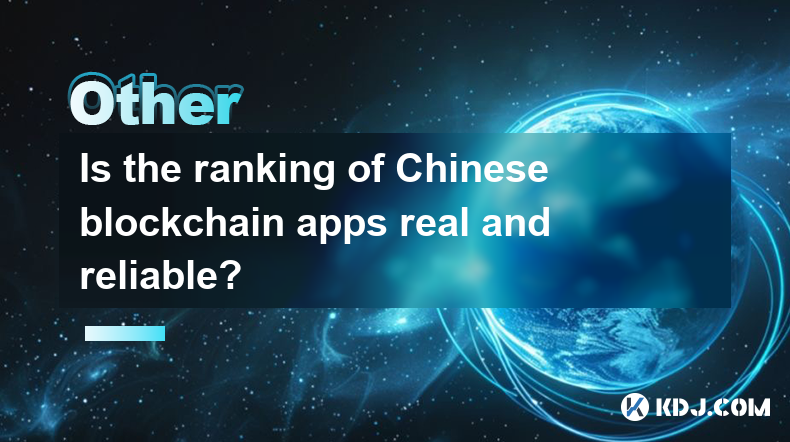
Is the ranking of Chinese blockchain apps real and reliable?
Apr 04,2025 at 09:01pm
The ranking of Chinese blockchain apps has become a topic of interest for many in the cryptocurrency community, as it provides insights into the popularity and adoption of blockchain technology within China. However, the reliability and authenticity of these rankings are often questioned. This article aims to delve into the factors that influence these ...
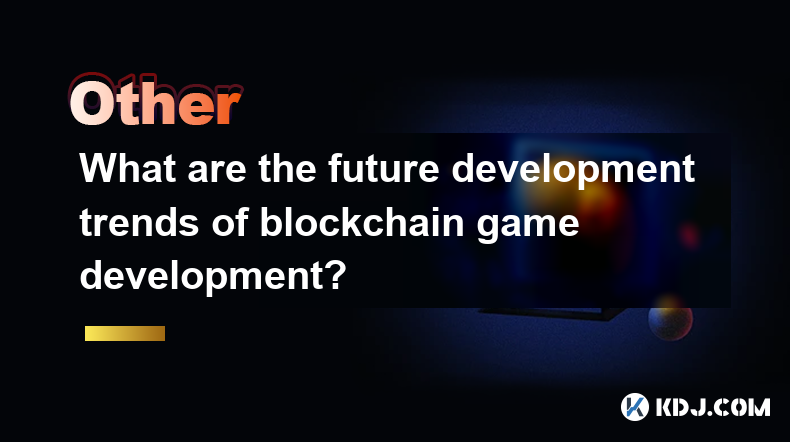
What are the future development trends of blockchain game development?
Apr 03,2025 at 05:00am
Blockchain technology has revolutionized various industries, and gaming is no exception. As we look to the future, several trends are set to shape the development of blockchain games. These trends not only promise to enhance the gaming experience but also to integrate blockchain technology more seamlessly into the gaming ecosystem. Let's explore these t...
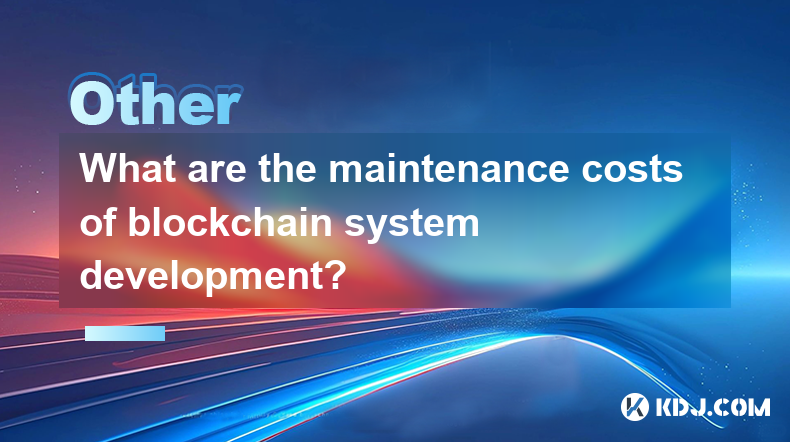
What are the maintenance costs of blockchain system development?
Apr 03,2025 at 06:07pm
The maintenance costs of blockchain system development are multifaceted and depend on various factors. These costs can include technical maintenance, security updates, infrastructure expenses, and personnel costs. Understanding these elements is crucial for anyone planning to develop or maintain a blockchain system. Technical MaintenanceTechnical mainte...
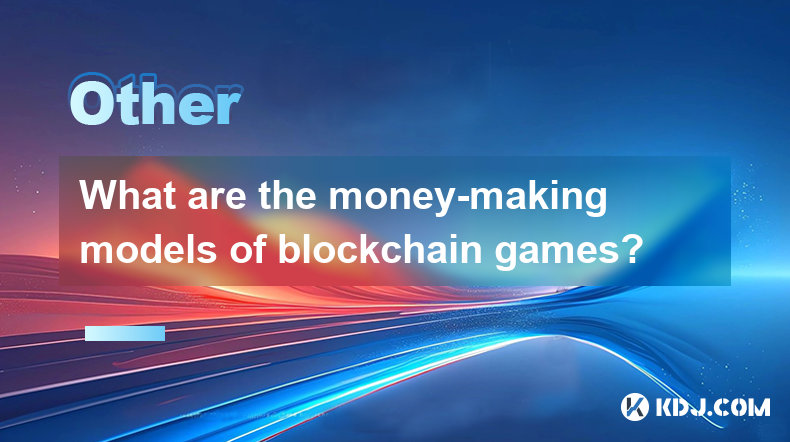
What are the money-making models of blockchain games?
Apr 04,2025 at 02:00pm
Blockchain games have emerged as a revolutionary way for players to earn real money while enjoying their favorite pastime. These games leverage the power of blockchain technology to create unique money-making models that benefit both the players and the developers. In this article, we will explore the various money-making models of blockchain games and ...
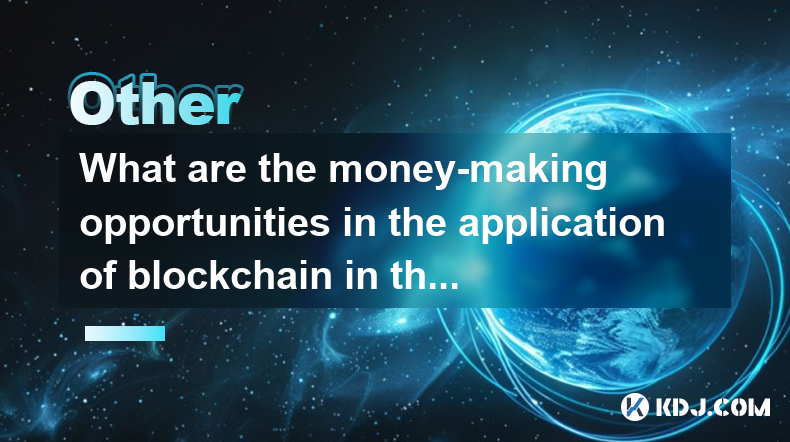
What are the money-making opportunities in the application of blockchain in the medical industry?
Apr 03,2025 at 03:35am
The integration of blockchain technology into the medical industry presents a myriad of money-making opportunities that can revolutionize healthcare systems. Blockchain's inherent characteristics, such as transparency, security, and immutability, make it an ideal solution for various medical applications. By leveraging blockchain, companies can develop ...
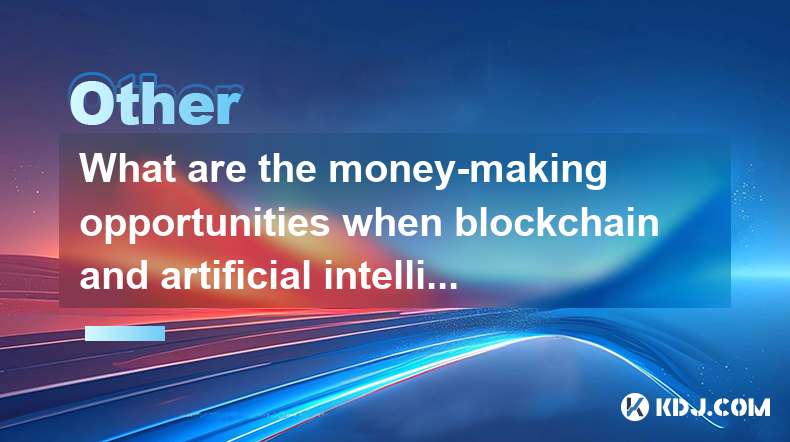
What are the money-making opportunities when blockchain and artificial intelligence are combined?
Apr 04,2025 at 01:28am
The convergence of blockchain and artificial intelligence (AI) presents a myriad of money-making opportunities within the cryptocurrency circle. This fusion leverages the decentralized and secure nature of blockchain with the analytical prowess of AI, creating innovative solutions and platforms that can generate significant revenue. From enhancing tradi...

Is the ranking of Chinese blockchain apps real and reliable?
Apr 04,2025 at 09:01pm
The ranking of Chinese blockchain apps has become a topic of interest for many in the cryptocurrency community, as it provides insights into the popularity and adoption of blockchain technology within China. However, the reliability and authenticity of these rankings are often questioned. This article aims to delve into the factors that influence these ...

What are the future development trends of blockchain game development?
Apr 03,2025 at 05:00am
Blockchain technology has revolutionized various industries, and gaming is no exception. As we look to the future, several trends are set to shape the development of blockchain games. These trends not only promise to enhance the gaming experience but also to integrate blockchain technology more seamlessly into the gaming ecosystem. Let's explore these t...

What are the maintenance costs of blockchain system development?
Apr 03,2025 at 06:07pm
The maintenance costs of blockchain system development are multifaceted and depend on various factors. These costs can include technical maintenance, security updates, infrastructure expenses, and personnel costs. Understanding these elements is crucial for anyone planning to develop or maintain a blockchain system. Technical MaintenanceTechnical mainte...

What are the money-making models of blockchain games?
Apr 04,2025 at 02:00pm
Blockchain games have emerged as a revolutionary way for players to earn real money while enjoying their favorite pastime. These games leverage the power of blockchain technology to create unique money-making models that benefit both the players and the developers. In this article, we will explore the various money-making models of blockchain games and ...

What are the money-making opportunities in the application of blockchain in the medical industry?
Apr 03,2025 at 03:35am
The integration of blockchain technology into the medical industry presents a myriad of money-making opportunities that can revolutionize healthcare systems. Blockchain's inherent characteristics, such as transparency, security, and immutability, make it an ideal solution for various medical applications. By leveraging blockchain, companies can develop ...

What are the money-making opportunities when blockchain and artificial intelligence are combined?
Apr 04,2025 at 01:28am
The convergence of blockchain and artificial intelligence (AI) presents a myriad of money-making opportunities within the cryptocurrency circle. This fusion leverages the decentralized and secure nature of blockchain with the analytical prowess of AI, creating innovative solutions and platforms that can generate significant revenue. From enhancing tradi...
See all articles





















































































